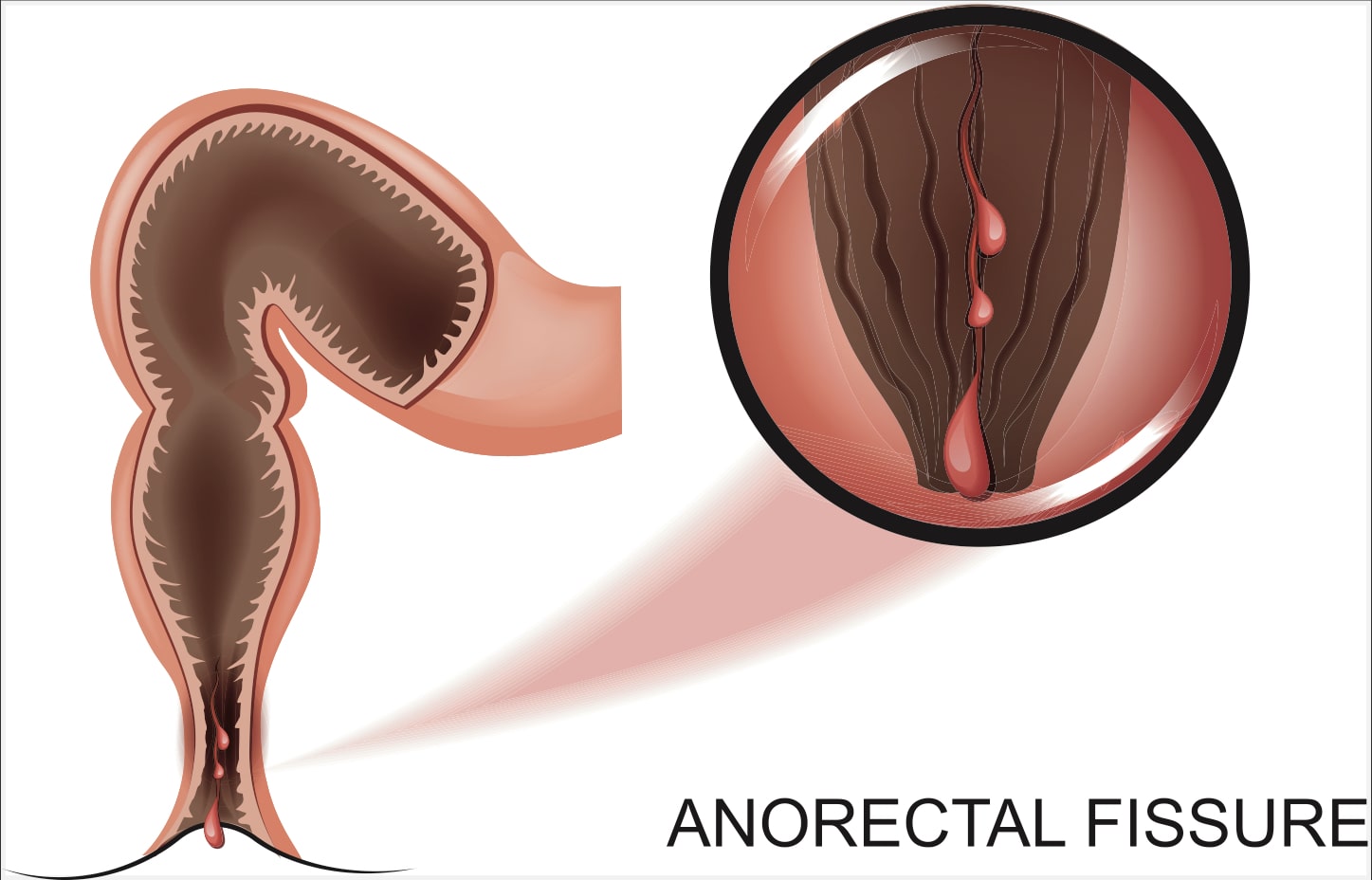Anal Fissure
What is Anal fissure
Anal fissure is a small tear in the inner lining of the anus. This occasionally occur after passing very hard stool when the pressure within the anus is high. It typically causes anal pain and may cause bleeding.
It is not a serious condition, and most people treat it at home.

Anal fissure is very painful. It is often described as “a knife push up the anus” sensation during defecation.
Sometimes there is associated bleeding.
Anorectal pain can be distressing, and one should seek medical treatment and not suffer needlessly.
It is also good to see a doctor when there is pain during bowel movement or notice blood on stools or toilet paper after a bowel movement.
Common causes of anal fissure include passing large or hard stool, straining during bowel movement, chronic diarrhoea and anal intercourse. Healing of anal fissure may be impaired when the anal pressure is high. Rare causes of anal fissure may include inflammatory bowel disease, anal cancer, tuberculosis, syphilis or HIV.
RISK FACTORS for anal fissure include constipation, anal intercourse and crohn’s disease. It is also more common in infants and middle -aged adults.
Diagnosis of anal fissure is base of the patient’s symptoms of anal pain and inspection of the anal region. An acute anal fissure looks like a fresh tear and chronic anal fissure might be deeper. Occasionally your doctor may recommend further testing to make sure that there are no other underlying conditions.
Anal fissure will heal withing a few weeks most of the time. You should keep your stool soft by taking more fibre and drinking enough water. Sometimes stool softener such as lactulose may help. Soaking in warm water for 10 to 20 minutes a few times a day, especially after passing motion, will help to relieve symptoms and promote healing.
Your doctor may prescribe rectogesic cream to be applied externally to the anal canal. This helps to relax the anal sphincter and promote healing. The side effect of this include headache. This will go away after applying the cream for 1 or 2 days.
Topical anesthetic cream may be helpful for pain relief.
Surgery may be needed if the anal fissure is resistant to other treatment. The surgery is called lateral internal sphincterotomy, which involve cutting a small portion of the anal sphincter muscle to reduce spasm and pain. Surgery has a small risk of causing fecal incontinence.




